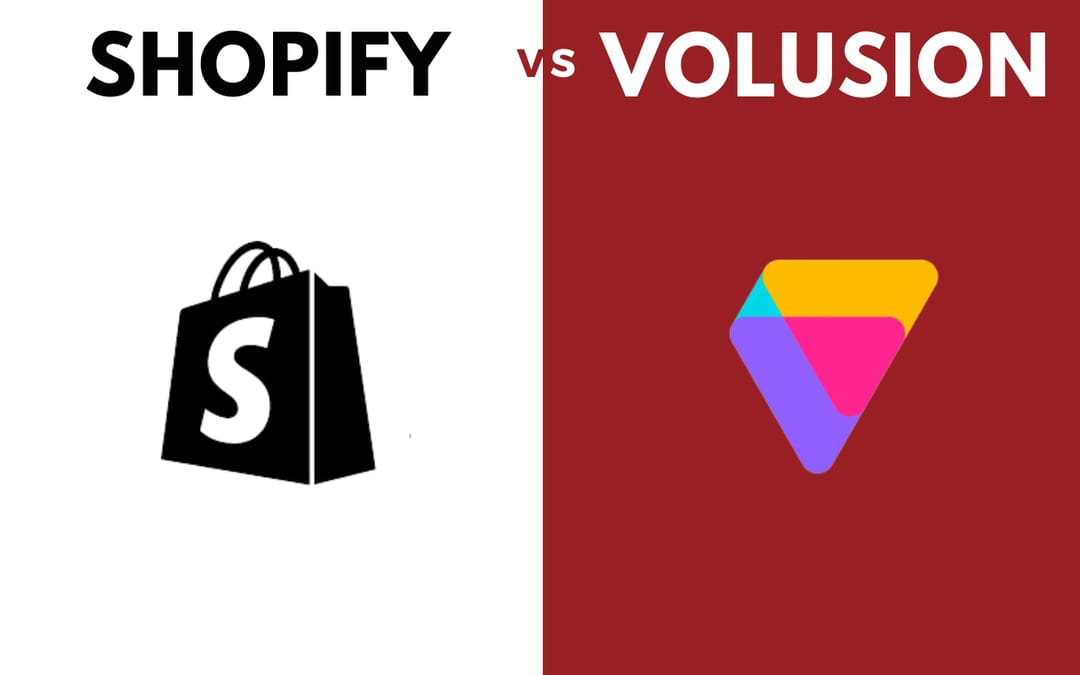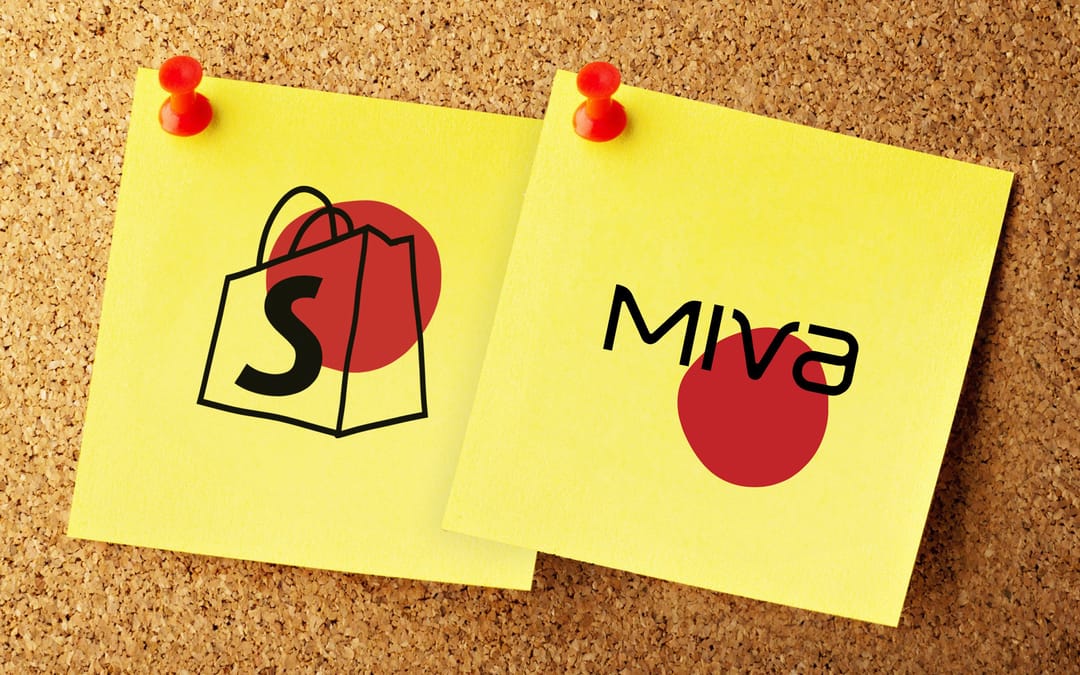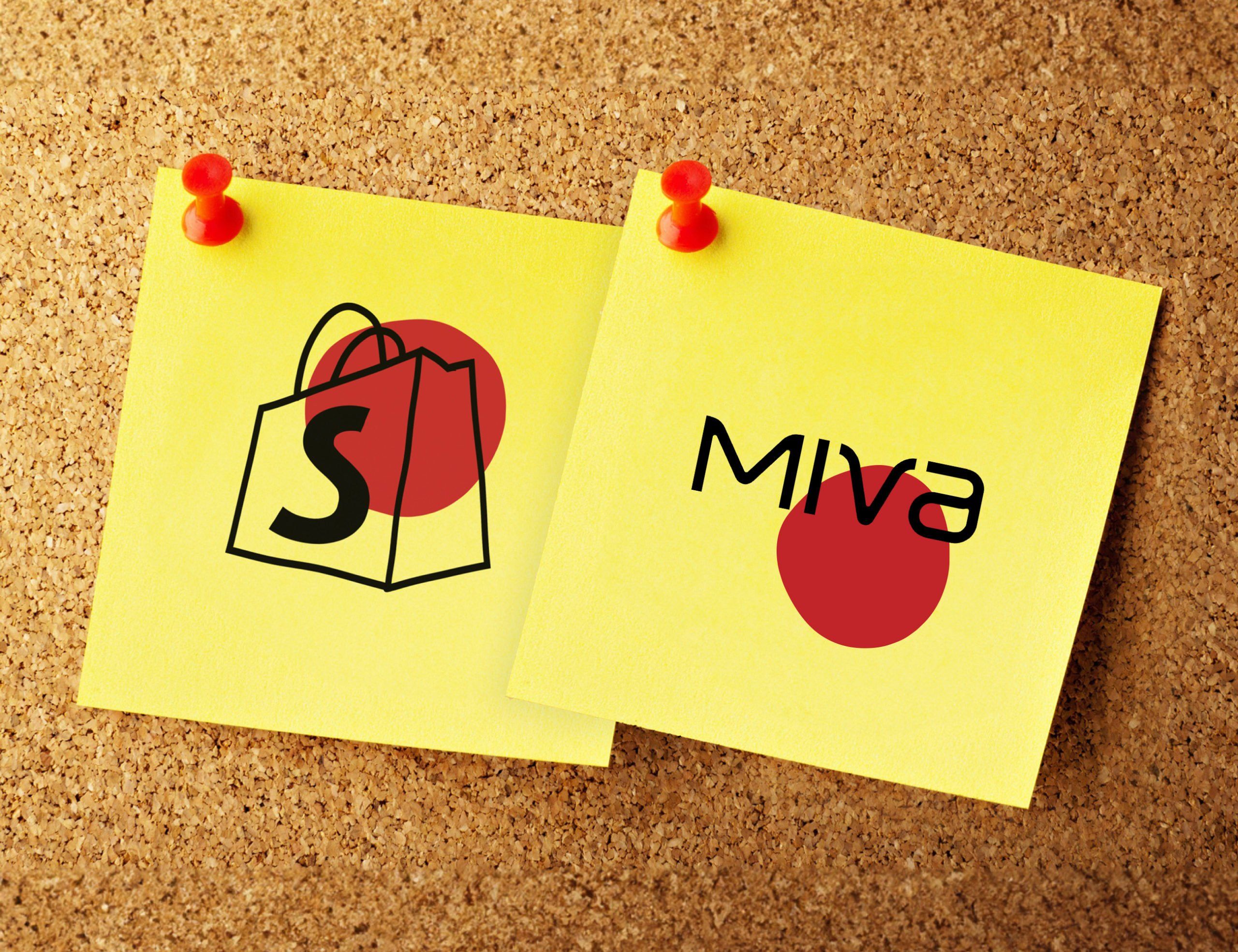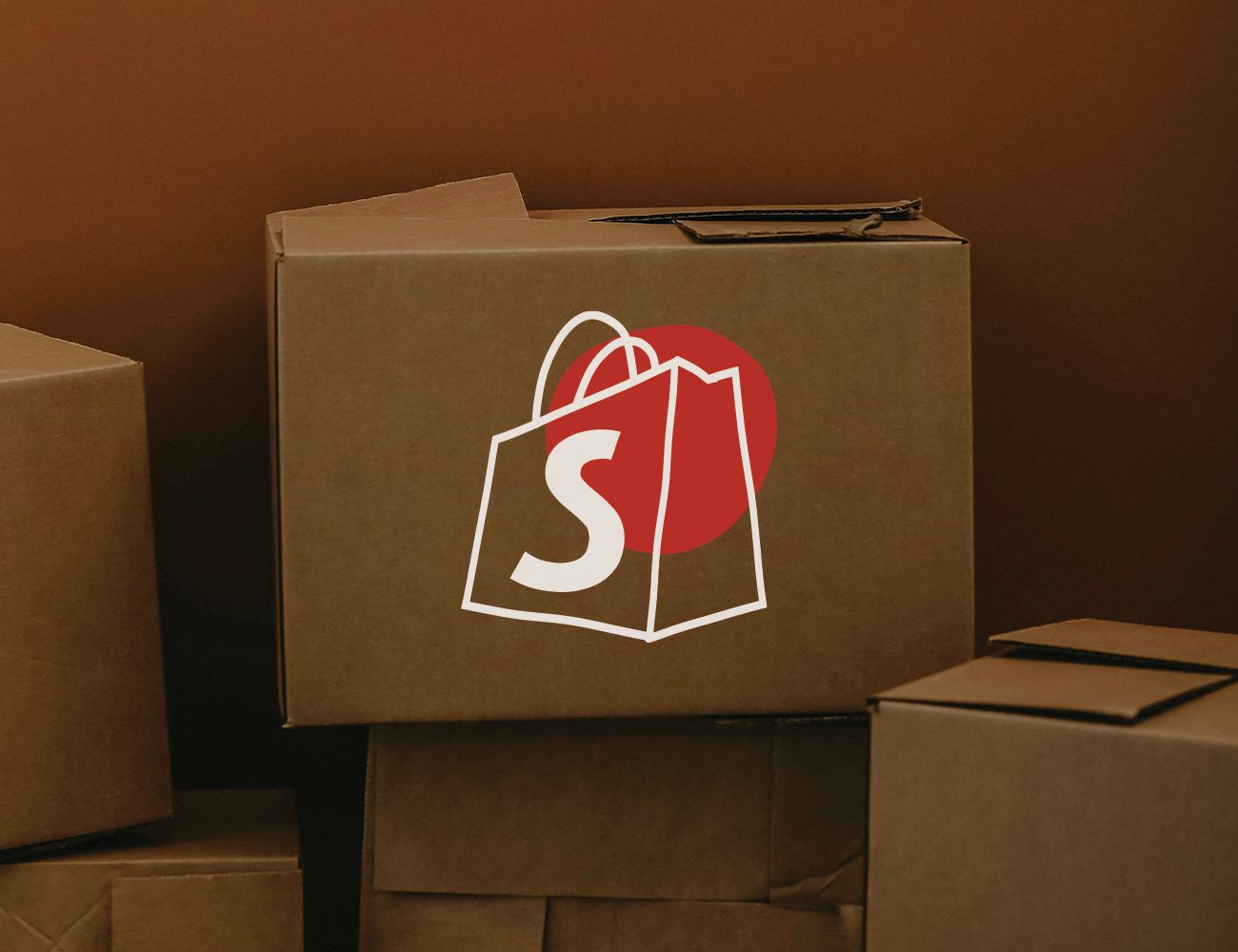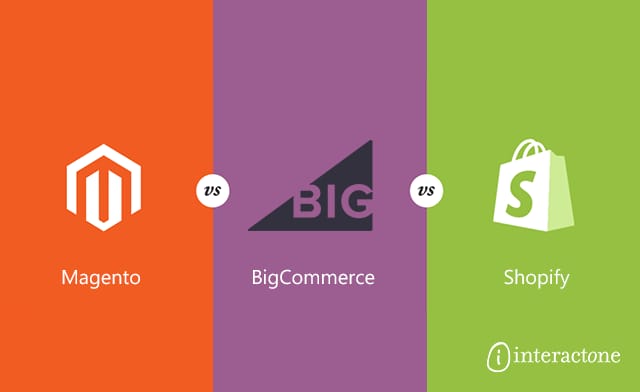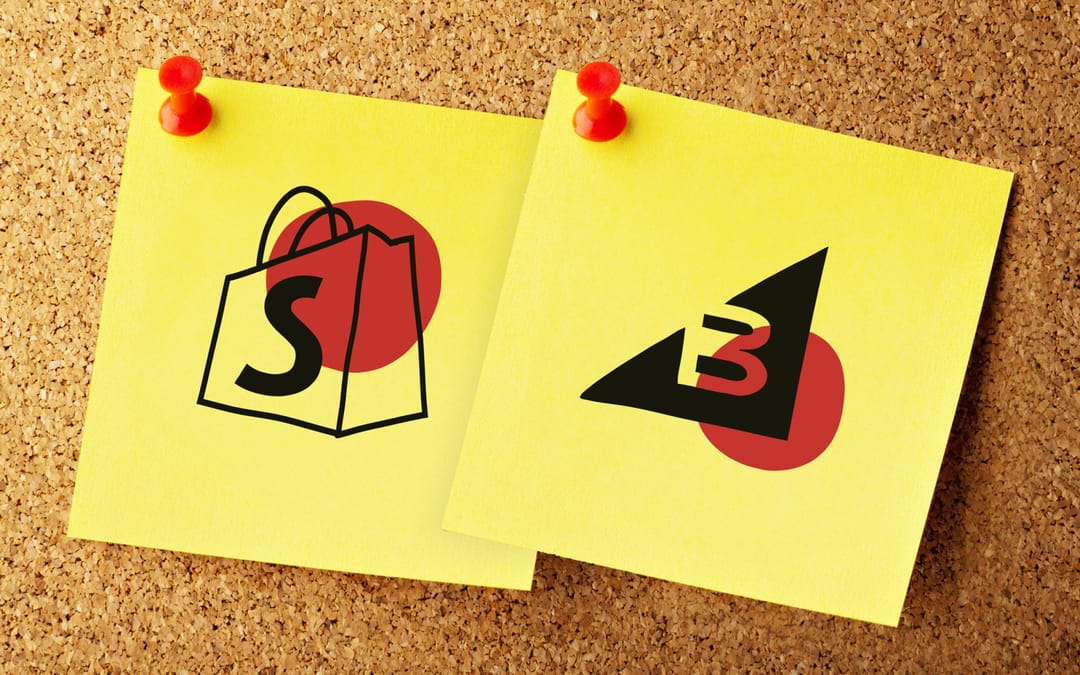BigCommerce and Shopify rank among the best eCommerce platforms. They make it easy for users to create, promote, grow, and maintain profitable businesses through a unified online store. Both platforms are intuitive, offering accessible features and mobile-responsive templates. When choosing between BigCommerce and Shopify, it’s crucial to consider their distinct strengths, impacting user experience, scalability, and overall business efficiency.
This article explores why both are great but also dives into critical factors to help you decide which aligns better with your business goals. Whether you’re starting your entrepreneurial journey or steering an established enterprise, our impartial analysis provides insights to make a decision aligned with your distinct business objectives.
In this guide to Shopify vs. BigCommerce, you’ll learn:
- BigCommerce vs. Shopify: Differences At a Glance
- Which one is better: Shopify vs BigCommerce?
- Key Comparisons in Commerce Platforms
- Head-to-Head Comparison
- Ease-of-Use
- Customization
- Features and Integrations/Plugin ecosystem
- SEO Capabilities
- Pricing Comparison
- Design and Customization
- eCommerce Tools
- Performance and Scalability
- Customer Support
- B2B Tools
- Which Platform Wins?
For help with all of your Shopify and BigCommerce eCommerce needs, contact InteractOne today.
BigCommerce vs. Shopify: At a Glance
Shopify and BigCommerce are popular eCommerce platforms designed to help businesses create and manage online stores. BigCommerce offers a comprehensive set of built-in features, providing scalability and customization options suitable for businesses of all sizes. It emphasizes flexibility, making it ideal for growth-oriented companies.
Shopify is known for its user-friendly interface and vast app ecosystem, making it easier for beginners to set up and manage their stores. Shopify is often favored by small to medium-sized businesses for its simplicity, while BigCommerce caters to those looking for robust features and scalability. Ultimately, the choice between the two depends on the specific needs and preferences of the business owner.
Which one is better: Shopify vs BigCommerce?
BigCommerce is excellent for big stores with lots of things to sell. BigCommerce makes many features possible without needing extra changes and doesn’t charge transaction fees. Being more feature-rich, it may have a steeper learning curve due to the capacity for growth and customization features. Additionally, BigCommerce has a threshold for annual sales, after which you must upgrade to a more expensive plan.
Meanwhile, Shopify is easier to use and provides an accessible base platform for anyone to set up a basic Shopify store. The multitude of apps in its app marketplace gives you options for customization and functionality. However, Shopify imposes transaction fees on your sales unless you use their payment portal. These charges can quickly add up for stores with high sales volumes.
Key Comparisons in Commerce Platforms
| Feature | Shopify | BigCommerce |
| Ease of Use | Known for straightforward interface. | Offers advanced features, with a steeper learning curve. |
| Pricing Structure | Transparent pricing with or without transaction fees. | Often considered more cost-effective for high-volume businesses. |
| Transaction Fees | Waived with Shopify Payments; additional fees for third-party gateways. | No additional transaction fees, even with third-party gateways. |
| Themes and Design | Wide variety of high-quality themes, focused on aesthetics. | Also provides attractive themes, with more control over customization. |
| App Ecosystem | Larger App Store with extensive third-party apps. | Robust App Marketplace, but may not have as many options as Shopify. |
| Multi-Channel Selling | Strong integration with social media and other channels. | Supports multi-channel selling but may not have as many integrations. |
| Abandoned Cart Recovery | Included in all plans. | Available in higher-tier plans. |
| Enterprise Solutions | Shopify Plus for advanced features and dedicated support. | BigCommerce Enterprise for high-volume businesses with enterprise needs. |
Head-to-Head Comparison
Distinct Features of BigCommerce |
| Built-In B2B Functionality | Includes tools like customer-specific catalogs, a Purchase Order system, and advanced quote management. |
| Staging Environment | Lets merchants test and preview changes to their online store before pushing them live, a useful feature for an error-free customer experience. |
| Multi-Currency and Multi-Language Support | Built-in support makes it easier for merchants to expand their businesses internationally, which is crucial for those targeting a global audience. |
| Faceted Search and Filtering | Beneficial for stores with a large inventory as customers can quickly find the products they’re looking for. |
Distinct Features of Shopify |
| Extensive App Ecosystem | Lets users enhance their stores with third-party apps. BigCommerce also has apps, but the sheer breadth of Shopify’s App Store is a notable strength. |
| Shopify POS (Point of Sale) | Enables users to seamlessly integrate online and offline sales channels. This is advantageous to retailers with physical stores. |
| Dropshipping Integration | Shopify has robust features and apps tailored for dropshipping businesses, including integrations with suppliers and tools for managing inventory and fulfillment. |
| Shopify Plus for Enterprise | Specifically designed for high-volume merchants and enterprise-level businesses, offering advanced features, customization options, and dedicated support to meet the needs of large-scale operations. |
Ease-of-Use
Shopify is often lauded for its user-centric interface and intuitive design, catering to beginners. The platform provides a straightforward setup process, customizable templates, and a large app ecosystem.
In contrast, BigCommerce presents robust features and scalability. While it may involve a steeper learning curve than Shopify, it provides more advanced tools for customization and growth. This fully-fledged platform attracts many users for its full suite of tools and features for online success.
Customization
Both BigCommerce and Shopify provide extensive customization options, enabling merchants to tailor their online stores to reflect their brand identity. They offer a variety of free and paid themes and templates across diverse industries.
For users with coding experience, both platforms offer a higher level of flexibility in design and functionality. BigCommerce is recognized for its flexibility and scalability, offering a wide range of customization options for users with more technical expertise.
Conversely, those with limited coding or design experience may find Shopify appealing due to its simple drag-and-drop feature, simplifying customization. It’s worth noting that achieving certain advanced features and customizations on Shopify may require knowledge of its proprietary coding language, Liquid. However, you can turn to Shopify’s vast library of themes and diverse app ecosystem for more straightforward customization, providing extra features and functionalities. This abundance of themes and apps offers alternatives that may eliminate the need for extensive coding experience.
Features and Integrations/Plugin ecosystem
BigCommerce and Shopify excel in providing robust integration capabilities through their respective app marketplaces.
Shopify’s App Store is known for its extensive and diverse offerings, spanning categories like payments, shipping, marketing, and analytics. The platform integrates with popular services such as PayPal, Stripe, and MailChimp, supported by a vibrant developer community.
In comparison, BigCommerce, while featuring a comprehensive App Marketplace with essential integrations, distinguishes itself with notable Enterprise Resource Planning (ERP) integrations, making it a favorable choice for larger businesses.
Both platforms support essential functionalities like payments and shipping, but Shopify’s larger and more diverse ecosystem may be appealing to businesses of various sizes.
SEO Capabilities
Irrespective of the SaaS platform selected for your eCommerce store, its effectiveness is tied to its visibility on search engines.
BigCommerce boasts strong out-of-the-box SEO capabilities, offering features like customizable URLs, automatic sitemaps, and responsive themes for effective mobile optimization—an essential factor in search engine rankings.
Shopify provides an easy-to-use interface with built-in tools for optimizing meta titles, descriptions, and URLs. It supports customizable header tags and redirects, with its app ecosystem featuring various SEO apps to enhance functionality.
Both BigCommerce and Shopify enable users to edit their site’s HTML and CSS, providing robust SEO capabilities.
Pricing Comparison
Monthly Subscription Fees
Both platforms operate on a subscription-based model. BigCommerce and Shopify have various pricing plans, starting from basic to advanced, with costs tailored to the size and needs of the business. Monthly costs range from $39 up to $399.
With Shopify, you can choose Shopify plans that best align with your budget and goals. However, in BigCommerce, your plan depends on the online store’s annual sales. The Standard plan is designed for stores with annual sales up to $50,000, the Plus plan for those with revenue up to $180,000, and the Pro plan for stores generating up to $400,000 in annual revenue.
Transaction Fees
Transaction fees can significantly impact overall costs. BigCommerce and Shopify differ in their approach to transaction fees. BigCommerce doesn’t impose additional transaction fees on top of the subscription costs. In contrast, Shopify charges transaction fees unless users opt for their proprietary payment gateway. Consider your overall sales volume when evaluating these transaction fee structures.
Additional Costs (Themes, Apps, etc.)
Beyond subscription and transaction fees, you can incur additional costs for themes, apps, and other add-ons. Both BigCommerce and Shopify provide a marketplace of themes and apps, some of which are free, while others come with a price tag. Understanding the necessity of these additional features and their associated costs is essential when evaluating the overall affordability of each platform.
Cost: Does Shopify Win?
Determining whether Shopify is cheaper than BigCommerce depends on various factors, such as the business’s size, sales volume, and specific needs. While Shopify may have a lower entry-level subscription fee, the transaction fees and additional costs to build an advanced Shopify website including using the Shopify app store can contribute to the overall expense. You should carefully assess your business’s requirements and preferences to determine which platform offers the best value for your investment.
Design and Customization
When designing and customizing your online store, factor in theme variety, design flexibility, and mobile responsiveness for a site that meets both aesthetic and functional requirements.
Themes and Templates
Both platforms provide a selection of themes and templates to help businesses create visually appealing and professionally designed storefronts. BigCommerce and Shopify offer a mix of free and premium themes, allowing users to choose a design that aligns with their brand identity and customer experience goals.
Flexibility in Design
If you have unique branding or functionality needs, the level of flexibility in design is a crucial consideration. BigCommerce is recognized for its flexibility and scalability, providing users with more technical expertise the opportunity to delve into deeper customization of themes. Conversely, Shopify caters to users seeking simpler customization with its clear-cut drag-and-drop editor, making it accessible for those with limited coding or design experience. Shopify offers an easier base, whereas BigCommerce offers more built-in features.
Mobile Responsiveness
In an era where mobile commerce is prevalent, ensuring mobile responsiveness is vital. Both BigCommerce and Shopify prioritize mobile responsiveness in their themes and designs. This ensures that online stores are optimized for various devices, providing a seamless experience for customers browsing and purchasing on smartphones and tablets.
eCommerce Tools
For managing your store, BigCommerce and Shopify offer tools to streamline operations and boost efficiency.
Product Management
Efficient product management is fundamental to any online store. Both platforms have robust tools for adding, organizing, and updating product listings. You can access features like product variants, categories, and descriptions to help you showcase your products.
Both BigCommerce and Shopify support detailed customization of product variants, ensuring flexibility. BigCommerce allows for the flexible organization of products into categories and subcategories, facilitating a structured product catalog. Shopify offers a straightforward product organization system so businesses can categorize and organize products for easy navigation.
Enhancing product presentation is prioritized, with rich options for detailed descriptions and multimedia content on both platforms. For easy management, both allow import/export of product data, with BigCommerce also supporting bulk import/export—an advantage for businesses with large catalogs.
Inventory Tracking: BigCommerce or Shopify?
Prevent stockouts or overstock situations through accurate inventory tracking. BigCommerce and Shopify equip users with inventory management tools, allowing businesses to monitor stock levels, receive low-stock alerts, and efficiently manage their product inventory to meet customer demand.
Order Processing for Fuller Carts
Smooth order processing is essential for delivering a positive customer experience. BigCommerce and Shopify offer a wide range of integrated payment gateways so businesses can choose options that suit their preferences and regions. Shopify has the added option of using Shopify Payments as an integrated solution for seamless transactions. There are also tools for subscription management, order fulfillment, tax calculation, and multi-channel selling.
Marketing: Learn More About Shopify and BigCommerce Tools
Abandoned cart recovery is available on both platforms, with BigCommerce offering it as a standard feature and Shopify making it optional. This allows businesses to send automated reminders to customers who still need to complete their purchase. BigCommerce has promotional banners to engage customers and drive sales, while Shopify offers customizable promotional pop-ups for effective marketing.
BigCommerce integrates with WordPress to combine content flexibility with eCommerce capabilities. It strongly focuses on SEO capabilities, offering customizable URLs, automatic sitemaps, and responsive themes. The embedded blog feature facilitates content creation and SEO optimization.
On the other hand, Shopify includes a powerful blogging platform for businesses to publish and manage content seamlessly for improved SEO and customer engagement. It offers customizable meta titles, descriptions, and URLs to optimize content.
For email marketing, BigCommerce integrates with various platforms for targeted campaigns and effective customer communication. In contrast, Shopify provides built-in email marketing features, offering customizable email templates and the capability to sync with popular email marketing services for comprehensive campaigns.
Both BigCommerce and Shopify support selling on social media platforms like Facebook and Instagram. Additionally, they provide robust tools for tracking website performance, customer behavior, and sales data, empowering businesses to shape informed marketing strategies based on comprehensive analytics and reporting features.
Performance and Scalability
The performance and scalability of your eCommerce platform are pivotal for providing a seamless and responsive shopping experience.
Page Load Speed
Page load speed directly impacts user experience and search engine rankings. Both BigCommerce and Shopify prioritize fast-loading pages. They use content delivery networks (CDNs) and optimize images to enhance page load speeds, ensuring customers can navigate and make purchases swiftly.
Server Reliability
The reliability of the server hosting your online store is critical to prevent downtime and ensure consistent accessibility. BigCommerce and Shopify invest in robust server infrastructure, minimizing the risk of server-related issues. Both platforms strive to provide reliable hosting solutions to keep online stores operational.
Scalability for Growing Businesses
As businesses grow, the scalability of the chosen platform becomes paramount. BigCommerce and Shopify are designed to scale with companies of varying sizes. They offer different pricing plans and infrastructure to accommodate increasing product catalogs, higher traffic volumes, and the evolving needs of growing online businesses.
Customer Support
The quality of customer support can significantly impact the overall experience of using an eCommerce platform.
If you encounter any issues or have questions, Shopify and BigCommerce provide multiple avenues for assistance. You can get 24/7 customer support through live chat, email, and phone. This ensures that users from different time zones and regions can access help whenever needed. These support teams can communicate directly with support representatives for more personalized assistance.
BigCommerce and Shopify also have comprehensive Help Centers that serve as a knowledge base. Users can find answers to common questions, tutorials, and guides to navigate the platform effectively. The Help Center covers topics ranging from setup to troubleshooting technical issues.
You can also find help through the BigCommerce and Shopify communities, where users can interact with each other, share experiences, and seek advice. This community-driven support system allows users to learn from the community’s collective knowledge and find solutions to specific challenges.
B2B Tools
Both platforms have features or functionalities that cater specifically to B2B needs.
BigCommerce and Shopify share some common B2B features:
- Customer groups and pricing lets merchants offer personalized pricing based on customer segments, such as order volume or loyalty.
- Custom price lists accommodate negotiated pricing for different B2B clients.
- Bulk ordering and discounts let users set up tiered pricing or discounts based on quantity, which can encourage larger purchases.
- Quote management lets customers request quotes for bulk orders, and merchants create, send, and manage quotes within the platform.
- Account management tools such as order history tracking, shipment tracking, and account management functionalities.
The BigCommerce platform has a few additional key B2B features:
- Purchase order (PO) system that lets B2B customers submit purchase orders directly through the online store, streamlining the ordering process for wholesale transactions.
- B2B shipping and tax features, including the ability to set up custom shipping options and handle complex tax scenarios.
- Customizable checkout processes, including multiple payment options and integration with payment gateways that support B2B transactions.
Meanwhile, some Shopify relies on third-party apps or customizations let merchants set up credit terms for their B2B customers. This can include options for net payment terms, helping businesses manage their cash flow.
Does InteractOne Prefer Shopify? Or does BigCommerce Win?
In the end, both BigCommerce and Shopify have distinct strengths and considerations for businesses looking to establish or enhance their eCommerce presence. Differences in features and functionality mean that the choice between both platforms depends on the specific needs and preferences of your business.
If you prioritize flexibility, scalability, and have technical expertise, BigCommerce may be the ideal choice. For user-friendly customization, a vast app ecosystem, and potential cost savings on transaction fees, Shopify wins.
With experience with both platforms, InteractOne can help you to make the choice between Shopify and BigCommerce by determining which features you really need. We analyze your requirements to identify which platform aligns with your interests. Leveraging our expertise, we provide an unbiased opinion to guide you in deciding which platform is a better fit for your business. Whether you are looking to build a Shopify store or BigCommerce store, we can help you to make the right decision. InteractOne provides an unbiased comparison of Shopify or BigCommerce. Contact us today to get started.
